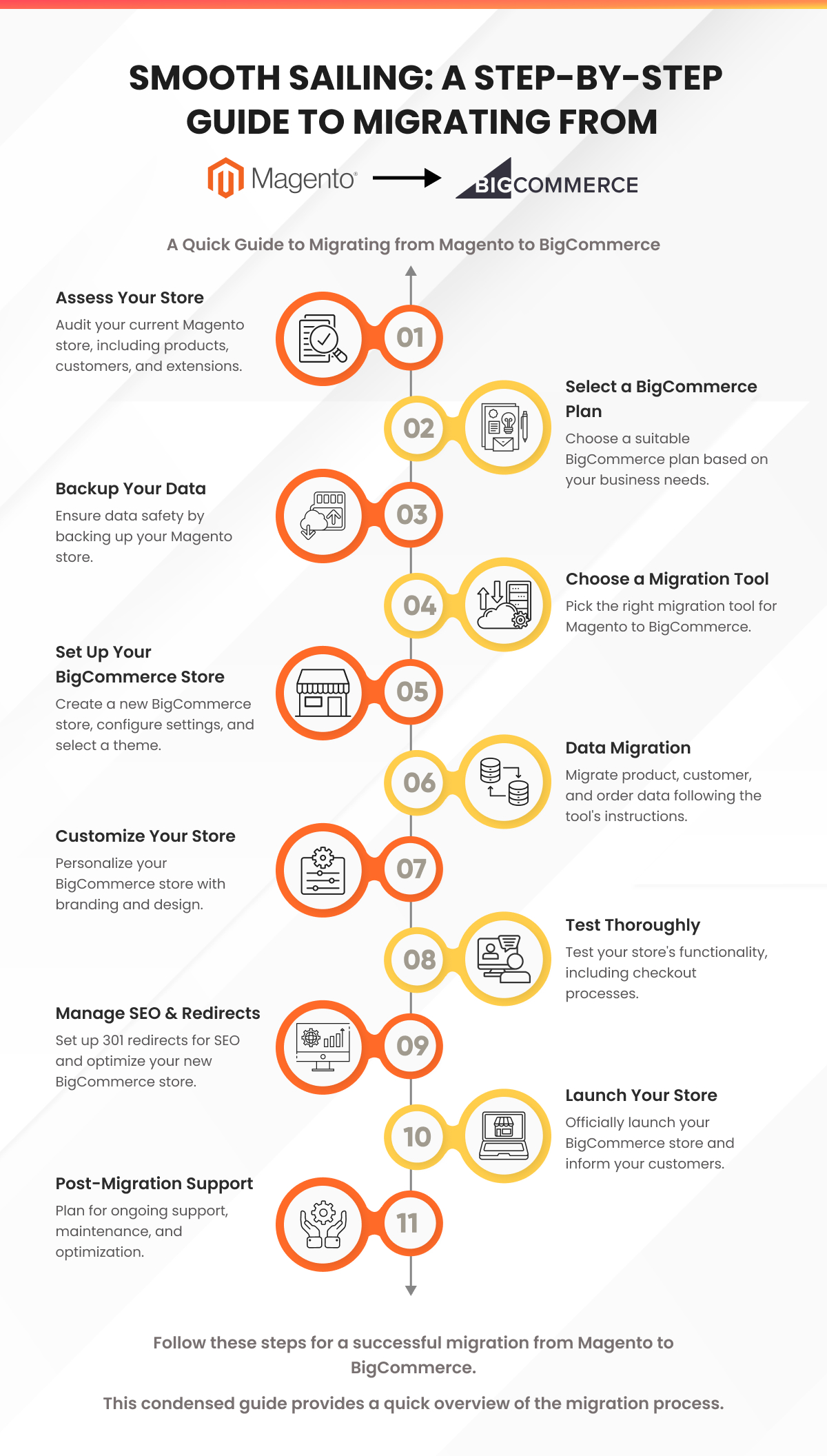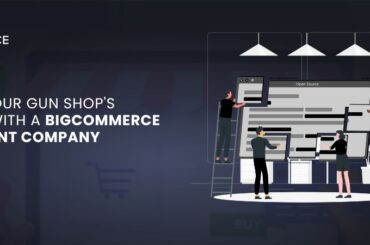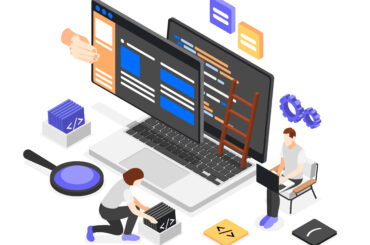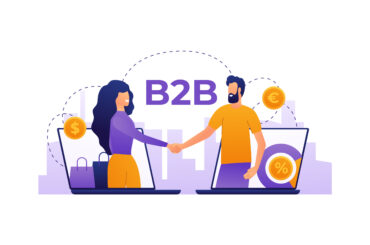Bigcommerce vs. Magento 2: Which one is best for my online start-up Business?
Last Updated | April 18, 2024
Choosing the right platform is crucial for your online startup’s success. But with giants like BigCommerce and Adobe Commerce (Magento 2), the decision can be overwhelming. This post will break down each platform’s key features, pricing, and suitability, helping you pick the perfect match for your business.
These two platforms hold a substantial market share and are favored among merchants seeking to establish a robust online presence. At the same time, both BigCommerce and Adobe Commerce (Magento) provide a solid foundation for e-commerce mid-scale and large-scale covering all industries of B2C, D2C, and B2B.
Read Also: Volusion vs. BigCommerce – What’s better, Volusion or BigCommerce?
Folio3 is a certified BigCommerce agency & technology partner with Adobe commerce certified developers, so we are well-versed in the ins and outs of both platforms.
Before we kick things off, though, here’s how the two builders stack up in terms of performance:
Bigcommerce vs. Magento 2 – At a Glance
Now that we’ve set the stage for the Magento vs BigCommerce showdown, let’s take a closer look at these two e-commerce giants. Understanding their core attributes will lay the foundation for a more detailed exploration.
|
BigCommerce and Adobe Comparison You can check the details and latest prices on the official BigCommerce pricing page (https://www.bigcommerce.com/essentials/pricing/). |
||||
| Feature | BigCommerce (Standard, Plus, and, Pro) | BigCommerce Enterprise | Adobe Commerce Community Edition | Adobe Commerce Cloud |
| General Features | ||||
| Target Audience | Small-scale | Mid-Market, High-Volume & Complex Businesses | Mid-Market, High-Volume & Complex Businesses | Mid-Market, High-Volume & Complex Businesses |
| Pricing | Standard: $39/month
Plus: $105/month Pro: $399/month |
Custom Pricing
Depends on monthly volume of orders |
Open source | Custom Pricing |
| Hosting | √ | √ | Self-hosted | √ *Self-hosted if On-premise |
| Free SSL certificate | √ | √ | √ *No if On-Premise | |
| Secure payment gateways | – Several are provided are out of the box
– Extensions are also available on Marketplace |
– Several are provided are out of the box
– Extensions are also available on Marketplace |
– Several are provided are out of the box
– Extensions are also available on Marketplace |
– Several are provided are out of the box
– Extensions are also available on Marketplace |
| Minimum Monthly Volume | Tiers are defined based on monthly/annual orders. | Tiers are defined based on monthly/annual orders. | ||
| Security Patches / Version Upgrades |
√ Automatically catered |
√ Automatically catered |
– Need to upgrade or apply manually with the involvement of the Development Team | – Need to upgrade or apply manually with the involvement of the Development Team |
| Scalability & Flexibility | High | High | Depend on Self-hosting | High (Dependent on Self-Hosting If On-Prem) |
| Products | Unlimited | Unlimited | Unlimited | Unlimited |
| Storage | Unlimited | Unlimited | Depend on Self-hosting | Unlimited (*N/A (Depends on hosting if on-prem) |
| Bandwidth | Unlimited | Unlimited | Depend on Self-hosting | Unlimited (*N/A (Depends on hosting if on-prem) |
| Abandoned Cart Saver | √
(Not available in Standard plan) |
√ | X | √ (Cart Persistence) |
| Stored Credit Cards | X | X | X | X |
| Customer Groups | Unlimited | Unlimited | Unlimited | Unlimited |
| API Access | Full | Full | Full | Full |
| Customizable Checkout |
√ (If custom checkout SDK is used) |
√ (If custom checkout SDK is used) |
√ Customizable |
√ Customizable |
| Discount Codes | Unlimited | Unlimited | Unlimited | Unlimited |
| Gift Cards | √ | √ | √ | √ |
| Multi-Currency | Multi-Currency is supported by some payment gateways.
Details can be found here: LINK |
Multi-Currency is supported by some payment gateways.
Details can be found here: LINK |
This can be done via multiple store views | This can be done via multiple store views |
| Blog capabilities | √ | √ | X | X |
| Language Translation | √ | √ | √ | √ |
| Currency conversion | √ | √ | √ | √ |
| 24 x 7 Customer Support | √ | √ | X | √ *No if On-Premise |
While this comparison highlights some key attributes to consider when choosing an e-commerce platform, it’s important to remember that both platforms offer a wider range of features. The best platform for you ultimately depends on your specific needs and requirements.
B2B Functionality:
Both platforms offer modules or features suitable for B2B businesses. However, it’s crucial to note that B2B features are typically only available in their higher tiers:
– BigCommerce: B2B features are available in BigCommerce Enterprise editions.
– Adobe Commerce: B2B features are included in Adobe Commerce On-premises (formerly Magento 2 Enterprise) and Adobe Commerce Cloud versions.
Exploring the specific B2B features of each platform would be beneficial in choosing the one that best aligns with your needs.
| BigCommerce and Adobe Comparison | ||
| Feature | BigCommerce Enterprise | Adobe Commerce On-premises & Cloud |
| B2B Features | ||
| Company Accounts | √ | √ |
| Request for Quote | √ | √ |
| Quick/Bulk Order Form | √ | √ |
| Quick Re-order / Buy Again | √ | √ |
| Sales Rep Masquerade | √ | – There is a feature in the B2B module as “Sales representative initiate the quote”. LINK |
| Assign SalesRep to the Company | √ | √ |
| Invoice Payments / Net terms | √ | X |
| Automatic Company Approval | √ | X |
| Shared Company Addresses | √ | X |
| Customization | Buyer Portal will be open-sourced in Q2/Q3 2024 | Customizable |
Making the Right Choice
Well, in this comprehensive comparison between BigCommerce vs Magento, we’ve examined the strengths and features of each platform to help you make an informed decision that aligns with your business goals. Let’s wrap up this discussion by offering some clear guidance on which platform suits which type of business best.
| You Should Use BigCommerce If…. | You Should Use Magento If… |
| You value easy setup, with all the tools you need already at your disposal | You have an in-house tech team or a tech partner on board |
| You’re not massively tech-savvy | You’re happy to take on a larger project when it comes to your online store |
| You want to sell across multiple channels, including social media (eg Facebook) | You are looking for extensive customizations in the core platform to suit your business needs |
| You want to avoid the hassle of hosting, frequent updates and security considerations. | You are looking to have full control over your store’s hosting and infrastructure. |
At Folio3, we understand that this decision is a critical one for your business. That’s why we’re here to offer our expertise in Magento and BigCommerce development. Whether you choose Magento or BigCommerce, we are committed to providing you with expert, reliable, and affordable Bigcommerce e-commerce development solutions. Reach out to us today to explore how our services can help your online business thrive.
Read Also: BigCommerce vs. Competitor Platforms – Which One Is Right for You?











